By Desis, for Desis and Everyone Else!!
What’s a Desi?
The term “desi” is a term that is commonly used by people from the Indian subcontinent to refer to themselves or other people (origin or ancestry) from the region.
The word “Desi” is derived from the Sanskrit word “desh,” which means “country” or “region” or “homeland”. (‘Sanskrit’ word ‘Desh’? What is Sanskrit?)
Did you ever wonder:
What is Indian culture like? Learn more!
Interesting facts about India you didn’t know about!
Explore Indian customs.
Traveling to India? You are in for a treat – Explore here!
Here are a few articles from this site – use the menu at the very top of this page to discover many more…
Desi people can come from countries such as India, Pakistan, Bangladesh, Nepal, Sri Lanka, Bhutan, and Maldives. The term can also be used to describe aspects of Indian origin culture, including food, clothing, music, and art.
Naga Panchami
What is Naga Panchami?
Naga Panchami or Nag Panchami is a festival where snakes – particularly Cobras are worshiped. The snakes or serpents, are regarded as symbols of fertility, rebirth, and transformation.
What do they do?
In India, snakes specifically cobras are worshiped as part of ancient folklore and beliefs. The worship of snakes is a prevalent practice across many regions and communities in India, with various festivals and rituals associated with it.
When is it? Where is it celebrated?
Naga Panchami, falls on the fifth day of the bright half of the lunar month of Shravana (July/August).
This festival is celebrated in various parts of the country, including Maharashtra, Karnataka, Andhra Pradesh, and Tamil Nadu.
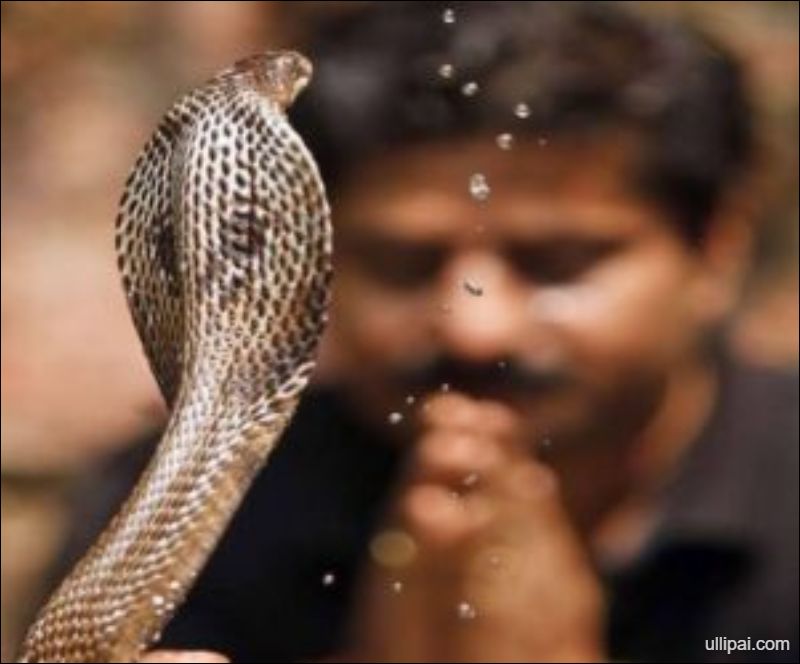
On this day, people offer prayers to Nagas (cobras) and offer milk, flowers, and sweets to their images or sculptures. In some regions, people also observe a fast on this day.
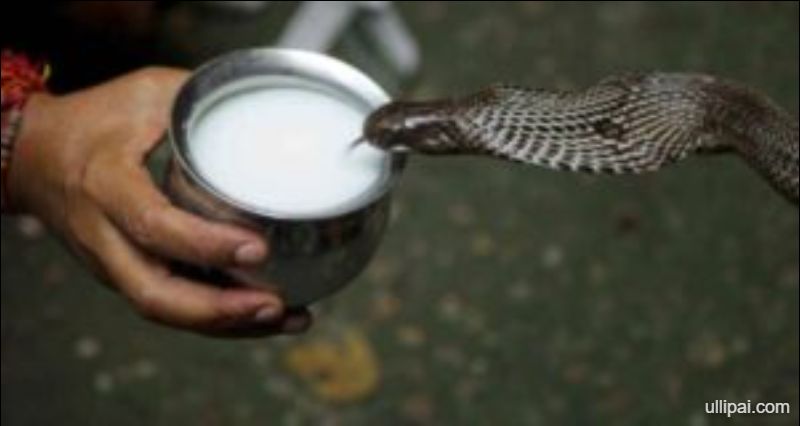
In the state of Kerala, there is a unique festival called Mannarasala Ayilyam, which is dedicated to the serpent god Nagaraja.
This festival falls on the day of Ayilyam Nakshatra in the Malayalam month of Thulam (October/November). During this festival, the Mannarasala temple, which is dedicated to Nagaraja, is decorated with flowers, and special poojas are performed to worship the serpent god.
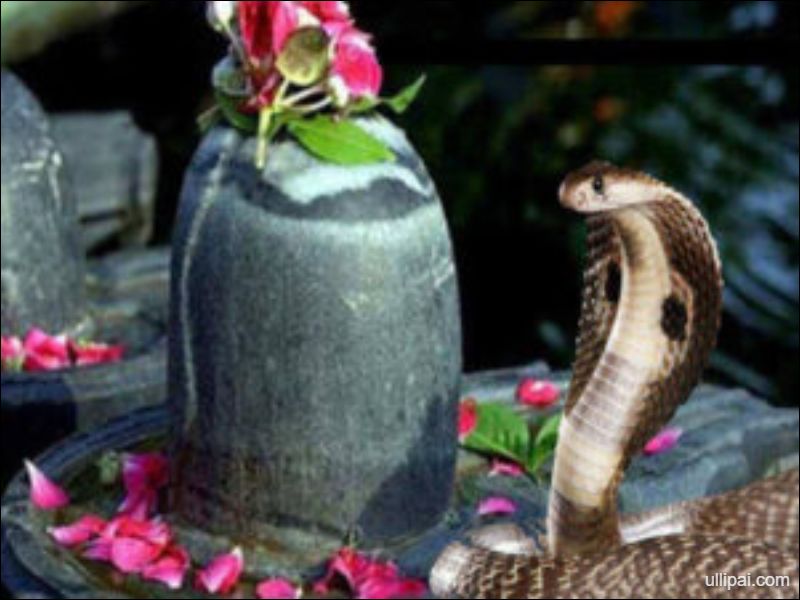
In some parts of India, Nag Panchami is celebrated as Garuda Panchami, where people worship the Garuda bird, who is believed to be the enemy of snakes.
Source for above images including the top image
Customs around snakes
Apart from these festivals, there are various other rituals and customs associated with snake worship in India. For example, some people keep images of snakes or cobras in their homes or gardens and offer milk or other offerings to them regularly.
The worship of snakes in India is deeply rooted in ancient beliefs. According to some stories within the epics, Lord Shiva wears a cobra around his neck, and his son, Lord Kartikeya, is also associated with snakes.
In some regions, it is believed that snakes have supernatural powers and can bless people with good fortune and fertility.
The worship of snakes and Nagas is an important aspect of Indian culture and traditions, with various festivals and rituals associated with it.
These customs and beliefs have been passed down through generations and continue to be an integral part of Indian culture.
Stories about Naga Panchami
The stories associated with Naga Panchami vary from region to region in India.
Kalia Mardana – the defeat of kalia the serpent
One popular story is about the victory of Lord Krishna over the serpent king Kalia.
According to the story, Kalia, a venomous serpent, lived in the Yamuna River and had been terrorizing the people and animals in the area. Krishna, who was a young boy at the time, challenged Kalia to leave the river and fight him on land.
After a fierce battle, Krishna emerged victorious and banished Kalia to the depths of the river, freeing the people and animals from his tyranny.
Sagara Manthana – the churning of the celestial ocean
Another legend is about the serpent Vasuki, who was used as a rope to churn the cosmic ocean to obtain Amrit, the nectar of immortality.
During the churning, the serpent’s poison was released, which threatened to destroy the universe.
Lord Shiva, who drank the poison to save the world, was celebrated and worshipped on Naga Panchami for his bravery.
On Naga Panchami, snakes are worshipped with milk, honey, and turmeric, and devotees offer prayers to seek their blessings and protection from harm.
Why does the word Naga even mean?
The word “Naga” in India has multiple meanings and connotations, and its usage varies across different contexts. Here’s an overview of some of the key meanings and cultural significance of the term “Naga” in India:
Snakes
In many Indian languages, the word “Naga” refers to snakes. In Hindu mythology, snakes are associated with Lord Shiva, who is often depicted with Vasuki, the king of all serpents around his neck.
Snakes are also seen as powerful and sacred creatures, and are worshipped in many parts of India. The city of Nagpur, for example, is named after the Nagas, who were believed to be serpent deities.
People
The term “Naga” is also used to refer to a group of tribes living in the northeastern part of India, primarily in the state of Nagaland. The Nagas have a distinct culture and language, and are known for their warrior traditions.
The Nagas have been in conflict with the Indian government for several decades, seeking greater autonomy and recognition for their unique identity.
Epics
In Indian traditions and texts, the Nagas are a race of serpent-like beings who inhabit the underworld.
They are often depicted as powerful and fearsome, with the ability to shape-shift into human form. The Nagas are associated with fertility, water, and protection, and are worshipped in many parts of India.
Buddhism
In Buddhist texts, the Nagas are water deities who protect the natural world. They are often depicted as half-human, half-serpent creatures, and are associated with the elements of water and earth. In some Buddhist traditions, the Nagas are seen as guardians of the Buddhist teachings.
Tantra
In Tantric traditions, the term “Naga” is used to refer to spiritual energy, often associated with the Kundalini Shakti. The Nagas are seen as a primal force that can be harnessed through meditation and other spiritual practices to achieve enlightenment.
As we can see, the term “Naga” in India has a complex and multifaceted cultural significance, ranging from its associations with snakes and serpent deities to its use as a descriptor for a distinct group of tribes.
The term is also closely linked to mythology, Buddhism, and Tantric traditions, and has been mentioned in several ancient texts, including the Mahabharata and the Ramayana.
Conservation
Conserving snakes is considered important in many cultures and religions around the world, including in India where Nag Panchami is celebrated. Here are a few reasons why:
- Ecological importance: Snakes play an important role in the ecosystem as they help control rodent populations and maintain a balance in the food chain.
- Cultural significance: Snakes have been revered and worshiped in many cultures since ancient times. They are considered sacred and are associated with many gods and goddesses.
- Medicinal value: Snake venom is used in the production of many life-saving medicines. Protecting snakes helps ensure the survival of many snake species, which is important for the development of new medicines.
- Superstition and fear: Many people believe that killing snakes will bring bad luck or invite divine retribution. In some cultures, snakes are believed to have supernatural powers and are feared as symbols of evil.
Significance of snakes around the world
Nigeria
In Nigeria, the Yoruba people believe in the deity Oshun, who is associated with the river and is often depicted holding a snake.
The snake is believed to be a messenger of the deity, and is considered to have healing powers.
The Yoruba people also believe in various other snake deities, including Oya and Ogun.
In many Nigerian cultures, the python is considered a sacred animal and is often associated with the goddess of the earth. Pythons are believed to have healing powers and are often kept as pets in some villages.
Greece
In ancient Greece, the cult of the healing god Asclepius was associated with the worship of snakes.
Asclepius was often depicted holding a staff with a snake wrapped around it, and the snakes were believed to have healing powers.
The temples of Asclepius were home to non-venomous snakes, which were allowed to roam freely and were considered to be sacred.
The serpent was also associated with the god Apollo, who was said to have slain the Python, a giant serpent that guarded the oracle at Delphi.
The serpent was also associated with the goddess Athena, who was often depicted with a serpent on her shield.
The serpent was believed to represent rejuvenation and rebirth.
Norse
In Norse mythology, the serpent was associated with the god Thor, who battled the giant serpent Jormungandr. The serpent was also associated with the goddess Hel, who ruled over the dead in the underworld.
Egypt
In ancient Egypt, the cobra was considered to be a sacred animal and was associated with the goddess Wadjet.
The cobra was often depicted on the headdresses of pharaohs, and was believed to offer protection and ward off evil spirits.
The cobra was also associated with the goddess Isis, who was believed to have the power to control snakes and was often depicted holding a snake.
The cobra was considered a symbol of royalty and divine authority. The goddess Wadjet was depicted as a cobra and was the protector of pharaohs. Snakes were also associated with the god Ra and the goddess Isis.
Mesopotamia
In Mesopotamia, the serpent was associated with the god Ningishzida, who was believed to have the power to bring the dead back to life. Ningishzida was associated with the underworld and the afterlife, and was considered a powerful and protective deity.
The serpent was also seen as a symbol of healing and regeneration, and was often depicted on amulets and other objects.
Sumeria
In Sumerian mythology, the serpent is associated with a number of deities and symbols, often serving as a symbol of renewal, fertility, and power.
A Sumerian deity associated with serpents was the goddess Inanna (also known as Ishtar), who was associated with love, war, and fertility.
In some myths, Inanna is said to have transformed into a serpent to escape from the underworld, representing the cyclical nature of death and rebirth.
The serpent also appears in the story of Gilgamesh, one of the most famous works of ancient Sumerian literature.
In the story, Gilgamesh sets out on a quest to find the secret of eternal life, and encounters a serpent that steals a plant that can grant immortality. The serpent sheds its skin and becomes young again, representing the idea of regeneration and renewal.
Overall, the serpent played a significant role in Sumerian mythology and was associated with a range of powerful deities and symbolic concepts.
Judaism
Serpents are mentioned in Jewish religious beliefs. In the book of Genesis, the serpent is famously known for tempting Eve in the Garden of Eden and leading to the fall of mankind. The serpent in this context is associated with deception and evil.
In the Book of Numbers, there is a story of Moses lifting up a bronze serpent on a pole to heal the Israelites from a plague of deadly snakes that God had sent as punishment. The serpent in this context is associated with healing and salvation.
In the Book of Isaiah, there is a prophecy about the coming of the Messiah. In this context, the Messiah is symbolized as a serpent, as the Hebrew word for “serpent” (nachash) can also mean “shining one” or “one who gives light.”
In Jewish mystical traditions such as Kabbalah, the serpent is associated with the primordial force of creation, known as the “serpent of wisdom.” The serpent is also associated with the divine feminine, as represented by the goddess Lilith, who is often depicted with serpents.
Christianity
In Christianity, the serpent is most famously associated with the story of Adam and Eve in the Book of Genesis in the Bible. In this story, the serpent tempts Eve to eat from the forbidden tree of knowledge, leading to the expulsion of Adam and Eve from the Garden of Eden.
The serpent is also mentioned in other parts of the Bible, including in the Book of Numbers where a bronze serpent is raised up by Moses to heal the Israelites who have been bitten by venomous snakes. In the New Testament, Jesus refers to this story as a metaphor for his own crucifixion and salvation of humanity.
Taoism
In Taoism, the serpent is associated with the concept of qi or life energy and is often depicted with a dragon.
China
In Chinese mythology, the snake is associated with the concept of yin and yang, and is believed to represent both male and female energies.
The snake is also associated with the Chinese zodiac, and is one of the twelve animals in the zodiac cycle.
In some regions of China, the snake is believed to bring good luck and is often depicted on various artworks and textiles.
In Chinese mythology, the dragon is often depicted as a serpent-like creature and is associated with power and good luck.
Dragons are believed to control the elements of nature and are often depicted in Chinese art and architecture.
Mesoamerica
In Mesoamerican cultures such as the Aztecs and Mayans, the snake was often associated with the god Quetzalcoatl, who was believed to have created the world and was often depicted as a feathered serpent.
The feathered serpent Quetzalcoatl was an important deity who was worshipped by many different cultures.
Quetzalcoatl was associated with wind, rain, and agriculture.
The snake was also associated with various other deities, and was often depicted in art and architecture as a symbol of power and fertility.
Cambodia
In Cambodia, the naga is a divine serpent-like creature that is believed to live in underground rivers and lakes. The naga is often depicted in Khmer art and is associated with water and fertility.
In Cambodia, the naga is a powerful symbol of royalty and protection. The ancient Khmer empire, which lasted from the 9th to the 15th century, was known for its elaborate serpent sculptures and carvings, which can be seen at Angkor Wat and other temples.
In a Cambodian legend, the naga were a reptilian race of beings who possessed a large empire or kingdom in the Pacific Ocean region. The Naga King’s daughter married the king of Ancient Cambodia, and thus gave rise to the Cambodian people. This is why, still, today, Cambodians say that they are “Born from the Naga”. Source
Thailand
The naga is also an important symbol in Thailand, where it is believed to guard the entrances to temples and other important buildings.
The Naga, a semi-divine race of half-human, half-serpent creatures, have been part of Thai culture and way of life for time immemorial, as manifested by the presence of ubiquitous statues and decorations of the supernatural being in art, various religious rituals, temples and traditional festivals. Source
In Thailand, there is a belief that the Thai people are descended from a Naga princess named Nang Noppamas. According to legend, Nang Noppamas was a beautiful and intelligent woman who was skilled in dance and music. She caught the eye of a king named Mahanaga, who fell in love with her and made her his queen. Together, they had a son named U Thong, who is considered the founder of the Ayutthaya Kingdom.
Many Thai temples feature elaborate serpent sculptures and carvings, including the famous Emerald Buddha at Wat Phra Kaew in Bangkok.
Indonesia
In Bali, the naga is associated with the sea and is believed to protect sailors and fishermen. The Balinese also believe that the naga has the power to control the weather, and many temples feature serpent sculptures and carvings.
Vietnam
In Vietnamese mythology, the dragon and the serpent are closely linked, with the dragon often depicted with the body of a serpent. The dragon is an important symbol of power and protection, and many Vietnamese temples feature elaborate dragon and serpent sculptures.
Australia
In Aboriginal culture, the rainbow serpent is an important deity that is believed to have created the world. The rainbow serpent is associated with water, fertility, and the cycle of life and death.
North America
Many Native American tribes have serpent-related beliefs and practices.
For example, the Hopi people of Arizona believe in a serpent spirit called Masauwu, who is associated with the underworld and is a messenger between the living and the dead.
The Cherokee people of the southeastern United States also have stories about serpent spirits, including a giant serpent called Uktena, who was killed by a warrior and whose body became the source of valuable gemstones.
Europe
In addition to the Greek myth of the serpent-like creature Python, there are serpent-related beliefs and practices in many other European cultures.
For example, the Norse god Loki was often depicted as a serpent or had associations with serpents.
In some Celtic traditions, serpents were associated with wisdom and healing, and were sometimes depicted on monuments or in art.
island cultures
Serpent-related beliefs and practices are also found in many smaller island cultures. For example, in the Pacific island nation of Fiji, there is a tradition of snake worship, with certain species of snakes believed to be sacred and protected.
In some parts of Indonesia, snakes are believed to have protective powers and are sometimes kept in homes as guardians.
Amazon
In some indigenous cultures in the Amazon rainforest, snakes are seen as important spiritual beings with healing powers.
For example, the Shipibo people of Peru use ayahuasca, a plant-based medicine, in their shamanic practices and often incorporate serpent imagery and symbolism into their art.
Are there venomous snakes in India?
Here are some venomous Indian snakes and their natural habitats:
Indian Cobra (Naja Naja)
Indian Cobras are found throughout the Indian subcontinent, from Sri Lanka to Pakistan.
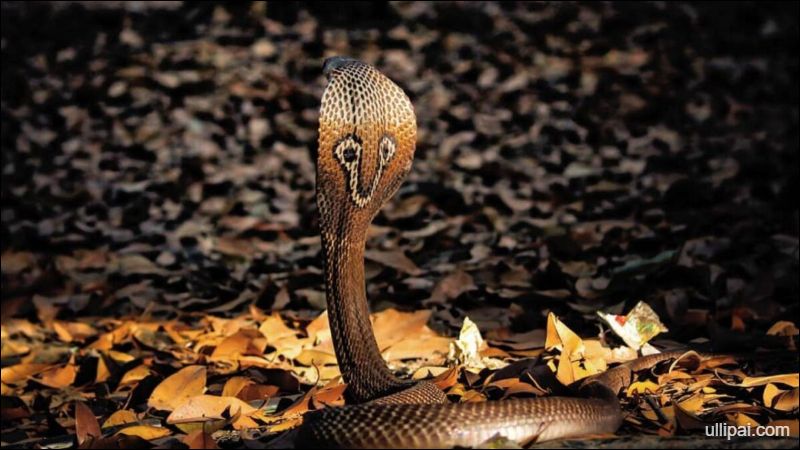
They prefer to live in agricultural fields, grasslands, and forested areas. They are attracted to areas where rodents and other small animals are abundant, which makes them more likely to be found in areas close to human habitats.
Indian Cobras are known for their venomous bite and are responsible for many snakebite fatalities in India. In Indian mythology, the cobra is considered a sacred animal and is associated with Lord Shiva.
Russell’s Viper (Daboia russelii)
Russell’s Vipers are found throughout India, Pakistan, Sri Lanka, and other parts of Southeast Asia. They prefer to live in rocky areas, grasslands, and farmland.
They are attracted to areas where rodents and other small animals are abundant.
Russell’s Vipers are known for their venomous bite, which can cause severe pain, swelling, and tissue damage.
In Indian mythology, the viper is associated with the Nagas, a race of half-human, half-serpent beings.
Indian Krait (Bungarus caeruleus)
Indian Kraits are found throughout the Indian subcontinent. They prefer to live in agricultural fields, grasslands, and forested areas.
They are attracted to areas where rodents and other small animals are abundant.
Indian Kraits are known for their highly toxic venom, which can cause respiratory failure and paralysis.
In Indian mythology, the krait is associated with Lord Shiva.
Saw-scaled Viper (Echis carinatus)
Saw-scaled Vipers are found throughout India and other parts of Asia and Africa. They prefer to live in sandy or rocky areas, and are often found in rural and urban areas close to human habitats.
Saw-scaled Vipers are known for their venomous bite, which can cause severe pain, swelling, and tissue damage. In Indian mythology, the viper is associated with the Nagas.
King Cobras
King Cobras are found in India, particularly in the forests of the Western Ghats, northeastern India, and the Himalayan foothills. King Cobras are the world’s longest venomous snake, growing up to 18 feet in length. They are different from regular cobras in several ways.
Firstly, the king cobra has a distinctive “hood” on its head, which it spreads out when threatened to appear larger and more intimidating.
Secondly, the king cobra has a broader head and shorter fangs than the Indian Cobra.
Thirdly, the king cobra primarily feeds on other snakes, including other venomous snakes, while the Indian Cobra feeds on small rodents, birds, and other small prey.
In terms of venom, both the Indian Cobra and the King Cobra are highly venomous, but the king cobra’s venom is more potent and can deliver a larger amount of venom in a single bite.
However, King Cobras are generally less aggressive towards humans than Indian Cobras and will usually only attack if they feel threatened or cornered.
Hooded snakes
Both Indian cobras and Indian king cobras have the ability to spread their necks to form a hood when threatened, but there are some differences in the appearance of their hoods.
The hood of the Indian cobra is typically round and distinct from the rest of the body, while the hood of the Indian king cobra is larger and more triangular in shape. Additionally, the Indian king cobra has a prominent single white or cream-colored mark on the back of its hood, which is absent in the Indian cobra.
Cobras around the world
There are several other species of cobras found around the world, such as the Egyptian cobra, the forest cobra of Africa, and the spitting cobras of Africa and Asia. Like Indian cobras and king cobras, these species can also spread their necks to form a hood. However, their hoods may have slightly different shapes and markings, and they may have other distinct physical characteristics as well.
In general, cobras are venomous snakes that belong to the family Elapidae, which includes other venomous snakes such as coral snakes and sea snakes. The venom of cobras and other elapids is primarily neurotoxic, meaning it affects the nervous system and can cause paralysis or respiratory failure.
Each of these snakes has its own unique characteristics, venom potency, and habitat preferences. It is important to exercise caution and seek medical attention immediately if bitten by any venomous snake.
Do snakes hunt down humans for revenge?
There are many myths and stories about snakes in Indian culture, and some people believe that snakes have the ability to bear resentments and hunt down human perpetrators.
However, these have no scientific basis. It is important to treat all snakes with respect and caution, and to avoid provoking or disturbing them in any way.
Jackfruit: Ancient Origins to Modern Kitchens
Jackfruit, scientifically known as Artocarpus heterophyllus, is not only the world’s largest tree-borne fruit but also a culinary chameleon. This blog post delves into the origins of jackfruit, its traditional and modern culinary uses, and its emergence as a popular meat substitute.
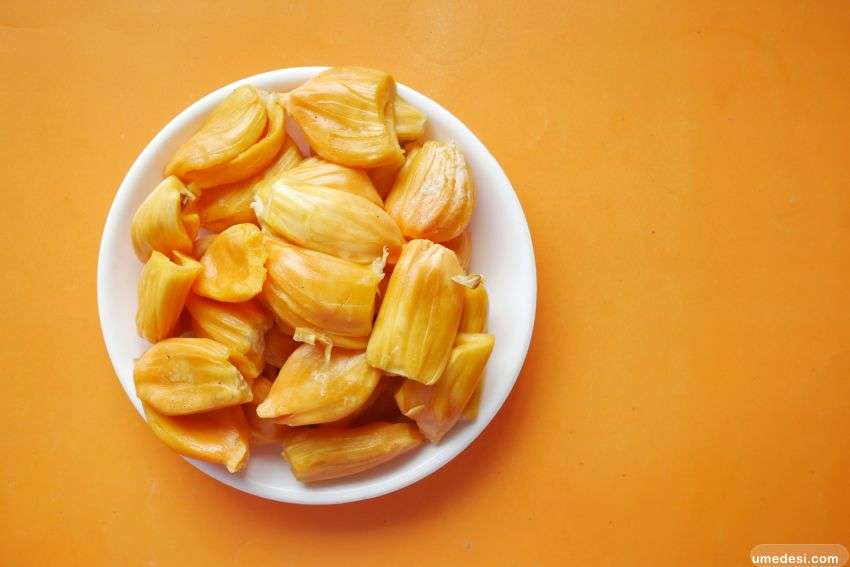
Origins and History
Native to the rainforests of the Western Ghats of India, jackfruit has been part of South Asian diets for centuries. It spread across Asia, becoming integral to various regional cuisines before making its way to the Americas and beyond.
What is Jackfruit?
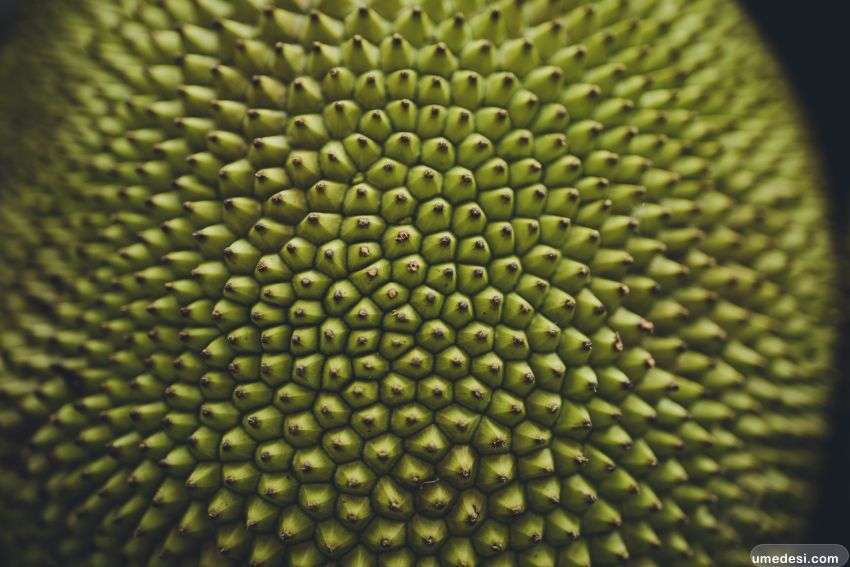
Jackfruit can weigh up to 100 pounds and contains large, edible bulbs of yellow, banana-flavored flesh. It is nutrient-rich, packed with vitamin C, potassium, dietary fiber, and antioxidants.
Global Popularity
Jackfruit is the national fruit of Bangladesh and a staple in the cuisines of Southeast Asia. It’s also used in the culinary traditions of Brazil and the Caribbean, showcasing its global appeal.
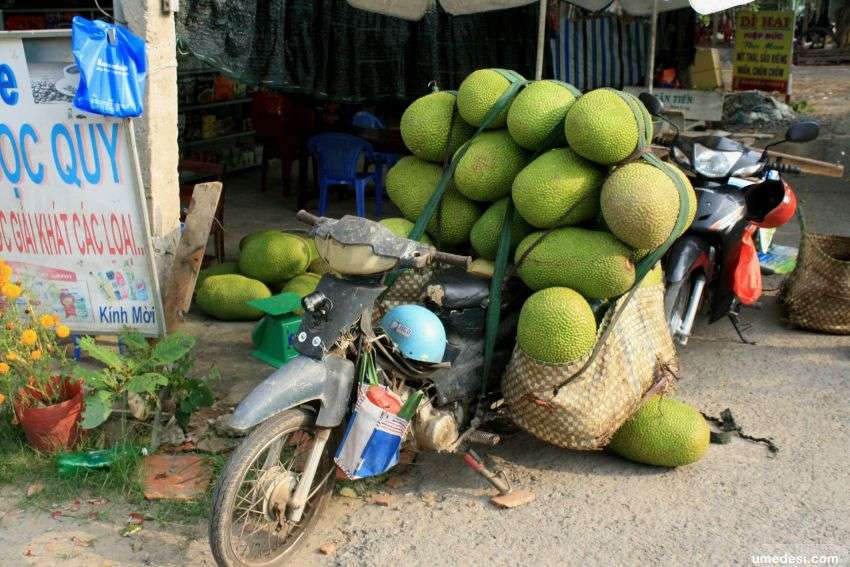
Culinary Uses
Jackfruit’s culinary versatility allows it to star in both sweet and savory dishes:
- Savory Dishes:
- India: Jackfruit is commonly used in dishes like Kathal ki Sabzi (a North Indian curry) and Chakka Puzhukku (a dish from Kerala made with young jackfruit, spices, and coconut).
- Thailand: Som Tam Khanun (Green Jackfruit Salad) is a popular choice.
- Western Dishes: Jackfruit has become a go-to meat substitute in vegan recipes such as barbecue pulled jackfruit sandwiches and jackfruit tacos.
- Sweet Dishes:
- India: In Indian cuisine, ripe jackfruit is often used in desserts like Chakka Pradhaman (a jackfruit pudding from Kerala).
- Philippines: Turón (a sweet snack made with jackfruit and banana wrapped in a spring roll wrapper and fried).
Modern Usage as a Meat Substitute

In the West, jackfruit’s texture makes it an excellent stand-in for meat:
- Jackfruit Pulled Pork: Made by sautéing young jackfruit with onions, garlic, and a smoky barbecue sauce.
- Jackfruit Tacos: Young jackfruit cooked with Mexican spices and served in corn tortillas with salsa and avocado.
Recipes:

- Jackfruit Pulled Pork
- Ingredients: Young jackfruit (canned or fresh), barbecue sauce, onion, garlic.
- Method: Sauté onion and garlic, add drained jackfruit, break it apart, and add barbecue sauce. Simmer until flavorful.
- Chakka Pradhaman
- Ingredients: Ripe jackfruit, jaggery, coconut milk, cardamom, ghee, cashews.
- Method: Cook jackfruit with jaggery and water until soft. Add coconut milk and cardamom. Fry cashews in ghee and add to the pudding.
Navaratri
India, the land known for her rich cultural tapestry, and her people celebrate a multitude of festivals to celebrate life, spirituality, and universal peace. Among these, Navaratri stands out as a vibrant and spiritually significant nine-night festival. Navaratri, which translates to “nine nights” in Sanskrit, is a time for devout worship, energetic dance, and culinary feasts. Let’s explore Navaratri in India.
NavaRatri – A Nine Day festival
Each day of this festival has a specific purpose and is dedicated to a different form of Mother Goddess Durga in all of her splendor.
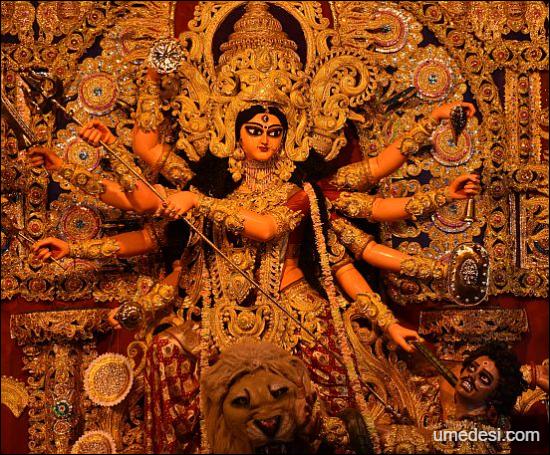
Day 1: Pratipada – Goddess Shailaputri
The first day of Navaratri, is in the honor of Goddess Shailaputri, the daughter of the mountains. She symbolizes purity and the power of nature. According to the stories, she is the reincarnation of Goddess Sati, the first consort of Lord Shiva.
Day 2: Dwitiya – Goddess Brahmacharini
Goddess Brahmacharini, worshipped on the second day, is an epitome of penance and devotion. She represents the pursuit of truth and knowledge. Her name signifies one who practices devout celibacy.
Day 3: Tritiya – Goddess Chandraghanta
On the third day, we venerate Goddess Chandraghanta, a symbol of bravery and grace. Her name derives from her half-moon-shaped bell (ghanta) and her fierce demeanor while fighting evil forces.
Day 4: Chaturthi – Goddess Kushmanda
Goddess Kushmanda, celebrated on the fourth day, is the creator of the universe. She is believed to have created the world by a mere smile. Her name signifies her power to provide warmth and energy.
Day 5: Panchami – Goddess Skandamata
Goddess Skandamata, revered on the fifth day, is the mother of Lord Kartikeya (Skanda), the god of war. She symbolizes motherly love, protection, and divine maternal instincts.
Day 6: Shashti – Goddess Katyayani
The sixth day honors Goddess Katyayani, a fierce warrior who emerged from the anger of the gods. She embodies strength, courage, and fearlessness.
Day 7: Saptami – Goddess Kalaratri
Goddess Kalaratri, worshipped on the seventh day, is the destroyer of darkness and ignorance. She is the fierce form of Goddess Parvati, symbolizing the triumph of light over darkness.
Day 8: Ashtami – Goddess Mahagauri
Goddess Mahagauri, on the eighth day, represents purity and serenity. She is depicted in a white attire, symbolizing her divinely peaceful nature.
Day 9: Navami – Goddess Siddhidatri
On the final day, we revere Goddess Siddhidatri, the bestower of supernatural powers. She signifies the fulfillment of desires and the ultimate achievement of spiritual enlightenment.
Festival traditions across India
Navaratri is also associated with Dussehra or Dasara in many parts of India, particularly in the southern regions. These festivals are related and mark the victory of good over evil, but they have distinct names and significance.
Navaratri
Navaratri, which means “nine nights” in Sanskrit, is a festival celebrated over nine nights and ten days. It honors the divine feminine energy, especially Goddess Durga, who is worshipped in various forms during this period. The festival is dedicated to the triumph of good over evil. Each day of Navaratri is associated with a specific form of the goddess and has its own significance.
Durga Puja
Embed from Getty ImagesIn West Bengal, Navaratri culminates in the grand Durga Puja festival. Elaborate idols of Goddess Durga are crafted and worshipped with great pomp and splendor. The festival is marked by processions, music, and cultural performances.
Dussehra or Dasara
Dussehra, also known as Dasara in some regions, is the culmination of Navaratri and typically falls on the tenth day. It is a major festival celebrated with great fervor. The word “Dussehra” is derived from Sanskrit and means “remover of bad fate” (dus – bad; sehra – fate).
Vijayadashami
Vijayadashami is another name for Dussehra, and it has profound significance. “Vijaya” means victory, and “dashami” refers to the tenth day of the lunar calendar. On this day, it is believed that Lord Rama, an avatar of Lord Vishnu, defeated the demon king Ravana, who had abducted Rama’s wife, Sita. It marks the victory of righteousness (dharma) over evil (adharma).
The story of Vijayadashami revolves around Lord Rama’s return to Ayodhya after his 14-year exile and his victory over Ravana. The people of Ayodhya celebrated his return by lighting lamps, which is why Diwali, the festival of lights, is also associated with this occasion.
Mahishasura Mardini
Mahishasura Mardini is a significant aspect of Goddess Durga. The name “Mahishasura Mardini” means “the slayer of the buffalo demon.” According to Hindu mythology, the demon king Mahishasura was causing havoc in the universe. Unable to defeat him, the gods invoked the divine feminine energy, and Goddess Durga emerged to confront and defeat Mahishasura in a fierce battle.
This story symbolizes the triumph of good (Goddess Durga) over evil (Mahishasura). During Navaratri, especially in South India, the goddess is worshipped as Mahishasura Mardini, signifying her role as the vanquisher of evil forces.
Ayudha Puja
One of the prominent traditions during Dussehra is the Ayudha Puja. Also known as Astra Puja or Shastra Puja, is a significant ritual in South India that involves the worship of tools, instruments, and vehicles.
While “Ayudha” does indeed mean “weapon” in Sanskrit, this puja is not limited to just weapons; it encompasses a wide range of objects and tools that are essential in people’s daily lives.
Ayudha Puja is a gesture of respect towards the tools and equipment that play a vital role in our daily lives. It emphasizes the idea of using our skills and tools responsibly and with gratitude.
Saraswati Puja
Embed from Getty ImagesIn some regions, Dussehra marks the end of the Navaratri celebrations with Saraswati Puja. Goddess Saraswati, the deity of knowledge and learning, is revered on this day.
Saraswati Puja during Navaratri usually performed on the 7th day (Saptami) or 9th day (Navami) of the festival, depending on local traditions, holds special significance for students as it aligns with the belief that invoking the goddess’s blessings during this auspicious period can enhance their academic pursuits and creative endeavors.
Books, musical instruments, and educational tools are kept in front of the goddess and worshipped. Students seek her blessings for academic success.
While Navaratri is celebrated across India, its essence and rituals vary from region to region.
Navaratri Traditions and Customs
Navaratri is a time of spiritual reflection, devotion, and celebration. Here are some key traditions and customs associated with this festival:
Garba and Dandiya Raas
Garba is a traditional Gujarati dance performed in a circular formation. Dancers move gracefully to the beat of traditional folk songs, often accompanied by claps and twirls. It symbolizes the circular path of life.
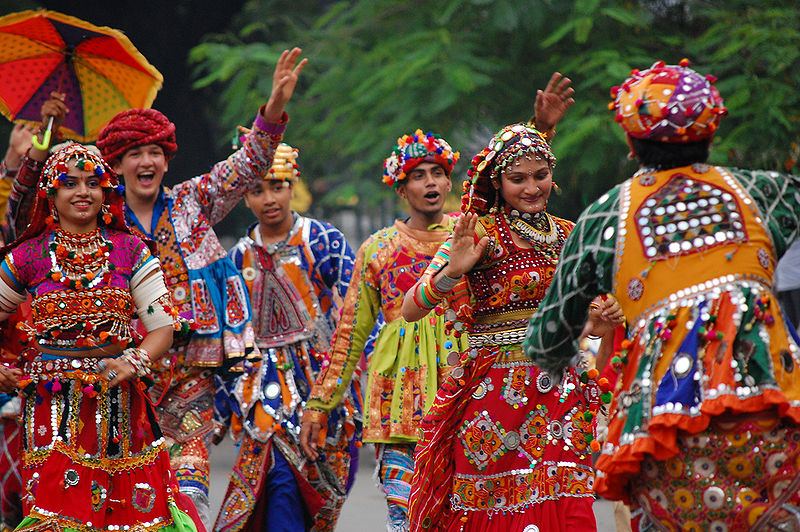
Dandiya Raas involves dancers wielding colorful sticks (dandiyas) in pairs. This lively dance signifies a mock-fight between the Goddess and the demon king.
Embed from Getty ImagesGolu or Bommai Kolu or Bommala Koluvu

Golu, also known as Bommai Kolu in Tamil Nadu and Gombe Habba in Karnataka, and Koluvu in Andhra Pradesh, is a significant tradition in South India, particularly during the Navaratri festival.
Families create Golu displays. Golu consists of arranging dolls and figurines in tiers or steps. Each step narrates a story or theme, often featuring deities and mythological scenes.
The topmost step usually features idols of deities, particularly Goddess Saraswati, Lakshmi, and Durga during Navaratri. Other steps may showcase scenes from epics like the Ramayana or Mahabharata, miniature village setups, and depictions of daily life.
Ram Lila
Embed from Getty ImagesRam Lila is a dramatic reenactment of episodes from the Ramayana, particularly the story of Lord Rama’s victory over Ravana.
On the final day of Durga Puja, effigies of Ravana, his brother Kumbhakarna, and his son Meghanada (Indrajit) are burned in a symbolic act of the victory of Lord Rama over Ravana. This event, known as Ravana Dahan, draws large crowds and is accompanied by fireworks.
Fasting and Prayer
Many devotees observe fasts during Navaratri. Some opt for a complete fast, while others consume fruits, milk, and light meals. Fasting is seen as a way to purify the body and soul.
Prayers and bhajans (devotional songs) are an integral part of Navaratri. Devotees visit temples and offer their reverence to the goddess.
Traditional Foods and Offerings
Navaratri is a gastronomic delight with a variety of dishes prepared across India. Here are some popular dishes and treats served during this festive season:
Sundal – South Indian Chickpea Salad
A South Indian delicacy, Sundal is a protein-packed snack made from boiled chickpeas or lentils. It’s seasoned with mustard seeds, curry leaves, and grated coconut, making it a healthy and delicious offering during the festival.
Payasam (South Indian) Or Kheer (North India) – Rice Dessert
Payasam or kheer is a sweet rice dish made with milk, rice, and flavored with cardamom and saffron. It’s a favorite dessert in all of India. Traditionally made with Jaggery.
Kuttu Ki Puri – Buckwheat Puri
A North Indian fasting favorite, Kuttu Ki Puri is made from buckwheat flour and deep-fried until it puffs up. It’s served with potato curry.
Sabudana Khichdi – Tapioca Pearl Stir-Fry
This Maharashtrian dish features tapioca pearls stir-fried with peanuts, curry leaves, and spices. It’s a popular fasting recipe.
Sandesh – Bengali Sweet
Sandesh is a famous Bengali sweet made from fresh paneer (Indian cottage cheese), sugar, and cardamom. It’s often garnished with pistachios.
Rasgulla – Sweet Cheese Balls
Another Bengali favorite, Rasgulla consists of soft cottage cheese balls soaked in sugar syrup. It’s a delightful dessert enjoyed during Navaratri.
Mysore Pak
Mysore Pak is a sweet treat that originates from the city of Mysore in Karnataka. It’s made from ghee (clarified butter), sugar, and gram flour. The result is a rich, melt-in-the-mouth dessert that’s savored during Dussehra.
Puliyodarai (Tamarind Rice)
Puliyodarai is a tangy and spicy South Indian rice dish made with tamarind pulp and a flavorful spice mix. It’s a popular dish often prepared for festivals and special occasions.
Obbattu or Holige or Puran Poli
Obbattu or Bobbattu, also known as Holige in Karnataka and Puran Poli in Maharashtra, is a popular sweet flatbread made from chana dal (split chickpea lentils) and jaggery. It’s a traditional delicacy during Dussehra and is enjoyed in southern India.
The term Desi can refer to people of Indian subcontinent origin or ancestry, or it can refer to the cultural practices and products of the region.
Desi food, will include dishes such as biryani, Pongal, samosas, Dosa, Idli, Parantha, Chawal and dal, while Desi fashion may feature traditional clothing styles like sarees, salwar kameez, Dhoti, and kurta pajama.
Desi music may include traditional folk music (dozens of styles), classical music (also several distinct schools), traditional dance (several traditional and ancient styles) and popular movie or music genres like Bollywood, Tollywood, Kollywood, Mollywood (all different regional language film industry names – a play on the word Hollywood).
Use the Menu at the very top of this page to view many more articles.



